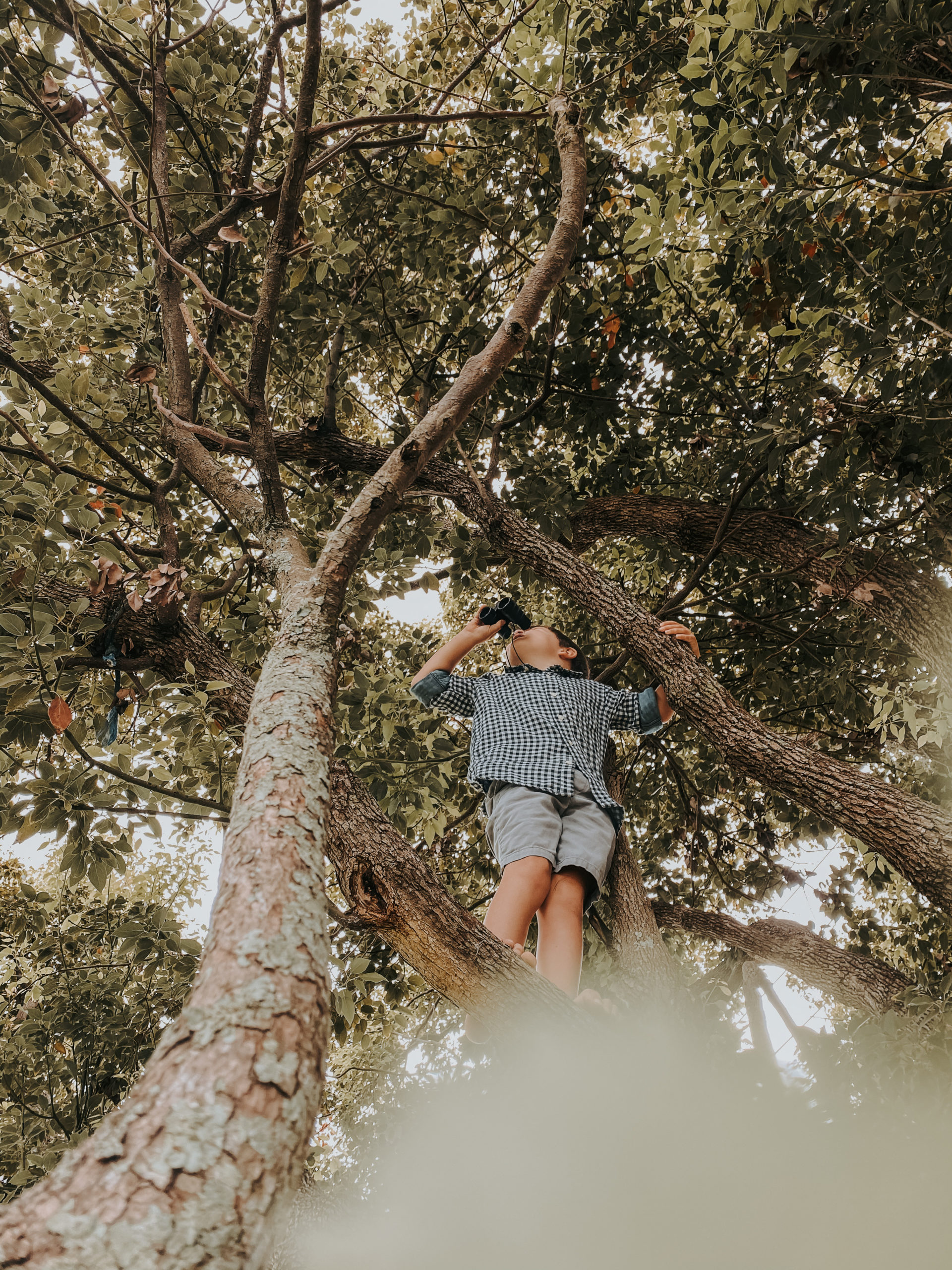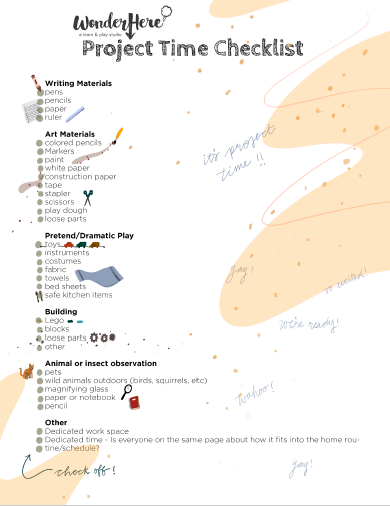
BLOG
Learning Through the Holidays
It’s undeniable that this holiday time of year is cheerful, magical, and full of anticipation. Putting up the twinkle lights, decorating the Christmas tree, trying new recipes, feasting with family, opening gifts, and for some, celebrating your faith… it all creates this atmosphere of joy and delight.
Except… when it doesn’t. While the holidays can certainly be magical, a lot of times we can feel thrown off our routine. For families who homeschool, you may be figuring out how to balance your daily rhythms and curricula, while partaking in fun holiday activities. For families whose children attend traditional school, you may be juggling enjoying your children’s time at home during Christmas break with work expectations. And many of you families may be in the in-between… still navigating distance learning, feeling like you are homeschooling and traditional schooling all at once while desiring to engage in the cheerfulness of this season.
Whatever your family’s educational situation is currently, I want you to know one thing: YOU get to decide what this season looks like for your children and your family. I encourage you to drop some of the weighty expectations you might be putting on yourself. It’s okay if your home isn’t the picture perfect Christmas scene. It’s okay to get store bought cookies over homemade. It’s okay if your children seem to be “checking out” of formal learning during this time. It’s okay if the only learning they do for the rest of the month is leisure reading and play.
It’s all okay. During this time, I challenge you to replace pressure with presence… curricula with connection… formal learning with family time… busy-ness with room to breathe. These are the things your child will remember.
Having said that, loose structure can be our friend. Having a few tricks up your sleeve can alleviate some of the “what are we doing today?” questions and give you a sense of direction for your day. So, I want to give you three simple, low-prep learning ideas and activities to help connect your family and keep the Christmas cheer going during this season!
Read, read… then read some more.
Never underestimate the power that leisure, choice-based reading can have on a child’s education. Truly, if the only formal learning you do this season is read, it will be well worth it. Research shows that reading aloud to your child (whether they are 1 year old or 15) has endless benefits, from modeling fluent, expressive reading, to engaging in storytelling, to simply (and powerfully) finding common ground for connection with your children.
Take a trip to the library together to scout out some favorite holiday reads. Is your library not open due to COVID? Most libraries these days have a website or app dedicated to helping you find and place books on hold for pick up! Call your local library to see what that protocol is. Here are some of our favorite Christmas books:
- Infants & Toddlers:
- Construction Site on Christmas Night by Sherri Duskey Rinker
- Little Blue Truck’s Christmas by Alice Schertle
- Llama Llama Jingle Bells by Anna Dewdney
- Where Is Baby’s Christmas Present?: A Lift-the-Flap Book by Karen Katz
- There Was an Old Lady Who Swallowed a Bell! by Lucille Colandro
- If You Take a Mouse to the Movies by Laura Numeroff
- Picture Books:
- The Night Before Christmas by Clement Clarke Moore
- Polar Express by Chris Van Allsburg
- How the Grinch Stole Christmas! by Dr. Seuss
- Christmas in the Big Woods by Laura Ingalls Wilder
- The Gift of the Magi by O. Henry
- The Year of the Perfect Christmas Tree: An Appalachian Story by Gloria Houston
- An Orange for Frankie by Patricia Polacco
- Chapter Books:
- Greenglass House by Kate Milford
- Winterfrost by Michelle Houts
- The True Gift by Patricia MacLachlan
- The Last Holiday Concert by Andrew Clements
- The Life and Adventures of Santa Claus by Julie Lane
- Nancy and Plum by Betty MacDonald
- A Boy Called Christmas by Matt Haig
- Letters From Father Christmas by J.R.R. Tolkien
- A Christmas Carol by Charles Dickens
There are so many fun, simple ways to incorporate reading during the holiday season. Build a fort in the family room and have a read-a-thon for the day. Do flashlight reading under the stars at night. Set aside just 15 minutes before bedtime to read aloud to your kids (or have an older sibling be in charge of read alouds!). Download an app or visit a website for audiobooks, like Epic, Audible, or Story Nory. Play audiobooks during breakfast time. There are so many possibilities!
Make a Christmas sensory bin.
If you have a busy toddler at home who’s just dying to get their hands on anything and everything, sensory bins might just be your lifesaver! A sensory bin is an open-ended activity where children can play and explore using their five senses. A sensory bin is usually made up of a bin containing some sort of filler material, and small (usually thematic) elements for your child to manipulate. Most items for a sensory bin can be purchased at your local dollar store! Here are some fun, Christmas themed sensory bin ideas…
- Ornament Sensory Bin
- What you need: Bin, white beans, plastic ornaments, clear ornaments for filling, ornament hooks, red/white/green poms, sensory tools.
- Set up: Place all materials in bin. Have your child practice threading ornament hooks on ornaments, scooping beans, or filling clear ornaments with poms.
- Jingle Bells Sensory Bin
- What you need: Bin, small single bells, filler like beans or rice, magnetic wand, sensory tools.
- Set up: Place all materials in bin. Have your child practice picking up the bells with the magnetic wand. Discuss magnetism… why does the wand pick up the bells but not the beans?
- Snowball Sensory Bin
- What you need: Bin, cotton balls, toy tractors, sensory tools.
- Set up: Place all materials in bin. Have your child play pretend by “snowplowing” the snow with the tractors. They can also practice picking up the cotton balls with the tweezers or other sensory tools.
- Hot Cocoa Sensory Bin
- What you need: Bin, brown beans or cocoa puffs (to represent chocolate), marshmallows, ladle, small cups.
- Set up: Place all materials in bin. Have your child pretend serving the “hot cocoa and marshmallows” into the cups.
Do some math and science… in the kitchen!
Sometimes the best way to infuse holiday time with learning is to simply invite your child into what you’re already doing. Whether you’re whipping up a holiday favorite from scratch or simply trying to put a weeknight meal together, invite your child to help! Cooking is full of opportunities to learn all subjects. Read recipes and ingredient labels. Decipher math through measurement and fractions. Observe the science of physical and chemical changes as ingredients transform from uncooked to cooked. Some recipe books even give you the history behind cultural dishes. And, best of all, connect with your child through making memories! Here are some of our favorite, simple, family-friendly holiday recipes:
So remember, learning in these season doesn’t have to be stressful or difficult or disenchanting or perfect. It needs to be just the right fit for your family. The key is enjoying time together, making room for peacefulness, and creating long-lasting memories. You’ve got this!
Jessica
TODDLERhood: The realest hood there ever was.
Remembering back to when my firstborn child went breezing through development – from rolling over to crawling to running; I had always heard rumors of the impending territory that was so apprehensively approached… the daunting “terrible-twos” or the “threenager” scenario. When meaning-well mothers of older children would so generously offer their not-needed reminders to savor this sweet time before toddlerhood takes over my sweetly tempered, newly mobile little one; I would dismissively nod my appreciation for this new news and continue about my playground play.
I am not exactly sure just when my oldest son turned the page from infant to toddler, but I know the exhaustion well. The sleeplessness is on an entirely different level than newborn. The energy required to keep such a haphazardly hurrying toddler from tripping or choking or ramming into something is other-worldly. And, can we get real for a second and talk about THE “potty” word that is on every toddler-mom’s mind? What a nightmare potty-training is! Am I right? Trying to toilet-train someone who barely speaks in comprehensible sentences, juggling a very wet and accident-ridden load of funny-smelling laundry, and smiling through gritted teeth as you engage in war-level negotiations regarding why exactly it is necessary to wash hands with soap after a trip to the commode. Yikes!
Who knew my oh-so-cuddly and squishy baby would so soon turn into this tantruming toddler? Turns out those moms at the park knew what I was quickly finding out: that raising toddlers is grueling business. A territory entirely in its own league of both complexity and beauty. In a nerve-wracking, buckle-up-and-hold-on tight… but also slow wayyyy down, take-in-the-scenery kinda way.
Now a mom of three beautifully busy children- ages 5, 2, & 7 mo., I am inching out of toddlerhood into something new and altogether scary with my oldest, all the while popping a U-turn, circling back through toddlerhood with my middle son, while mentally preparing myself for that final return trip back with my baby girl soon enough. I surely don’t know it all, but have learned so much from my first-hand experiences raising and currently parenting toddlers and young children.
Parenting little ones? Taking the scenic route through toddlerhood? If that’s you, here are a few simply tips to pack with you:
Play
Play all the time. Play all day. Play with loose parts, open-ended things (blocks, crafts, building material). Play outside in nature. Just play.
Sensory
Engage and attend to each of their senses. Scent. Taste. Feel. Sound. Sight. Through playing, introduce sensorial experiences to your toddlers and help connect them to the natural-world and make meaningful connections.
Read
There is hardly anything that is a greater indicator of future literary success than for a child to be frequently read to as a young child. Demonstrating the joy and interest that can be attached to reading will help your child to create positive connections to reading and life. Build memories around reading good books together and aloud with your child. Being read aloud to also develops vocabulary and grows your child’s background knowledge into a deepened well of content that which your child can dip from for years to come.
Toddlerhood is a land that is incredibly textured. Hills and valleys. Ups and downs. Marked by both bumpy terrain and well-manicured roads – some well-lit, while others darkened. You could choose to be afraid of it, brace yourself for the worst, roll your windows up, and exceed the speed limit without taking any detours or pitstops along the way. Or… you could choose to enjoy it. Slow way down and sing-along to that road trip playlist. Your mindset and how you approach raising toddlers can largely influence what you do and don’t do intentionally while trekking through this region of child-development.
Toddlers can be loud. They can be messy. And they have yet to master the art of empathy and compromise. But toddlers are also SO. MUCH. FUN. They are silly. They are so cute. They love cuddles and they LOVE playing with you. To them, the sun rises and sets on you. And toddlers are filled with so much love. Before they realize they could be “cool” or “beautiful” or pursue accomplishments. Before all of that, they were toddlers. Containing so much goodness and creativity all on their own.
Toddlerhood might not be a familiar or comfortable territory for you, but believe me, you’ll make it through the other end. And, while you may just be getting started where the rubber meets the road, you’ll find there are so many sweet spots along the way. Don’t rush toddlerhood and don’t be afraid of it. Yes, it is hard. Yes, it is exhausting. I am right here with you… three kids deep. But, these sweetly curious little ones are great reminders for us of all the goodness in the world and the future that is coming. I won’t tell you to savor it. That seems trite and sometimes I also feel like eating a ton of ice cream at the end of a hard day with my young children. But I do want to encourage you to be intentional while raising your toddlers. Make memories, extend grace to yourself and excessive loads of patience when possible, and play, provide sensory experiences when you have the energy to do so, and read read read. Keep on keeping on. Enjoy the ride.
Tiffany
Math, Differently Still
I can’t believe it’s been nearly FIVE years since I wrote this 2-part blog post series on “Seeing Math Differently” and “Doing Math Differently“. Back then, I was on my way out of public school, just embarking on our WonderHere journey, and so very excited to explore what learning without limitations was like. Math was probably my least favorite subject to teach in public school, mostly because the way we were mandated to teach math was boring, and boring learning is definitely not something I wanted to be known for (I explain this more in-depth in the post “Seeing Math Differently“). But in my last year as a public school teacher, I got the opportunity to be in a math leadership co-hort that trained us on inquiry and project based math learning. I was hooked. Turns out… after all those years of the dreaded math hour… math COULD be fun (and relevant and creative and applicable) after all!
Fast forward five years, and it’s so neat to see the kind of math our sweet kids at WonderHere get to do. It’s also encouraging to see that the tips I listed out in the post “Doing Math Differently” still apply:
- Ditch the workbooks.
Back then, I explained that workbooks in and of themselves are not the problem, and can be beneficial for reviewing and reinforcing skills. But when we use workbooks as a springboard for learning, that’s not a super exciting way to start. With WonderHere, workbooks are used as needed, but we find way more exciting and relevant ways to teach math, like projects and game-based curriculum!
- Explore Before Explain / Question Before Tell
This goes back to the fundamental idea we believe in at WonderHere: it’s not our goal as adults to dump all our knowledge into kids’ “empty” brains. Children naturally possess the insight, critical thinking skills, and persistence needed to question the world around them. So, instead of the “stand and deliver” method of lecturing and students copying our methods, at WonderHere we pose inquiries and allow kids to explore math problems and manipulatives before jumping right into “do it this way.”
- Use Alternative Algorithms
Did you know there’s usually more than one way to solve a math problem? In fact, there are usually many ways to solve a math problem. Traditionally, we teach one way and expect all children of all different learning styles and modalities to understand. But alternative algorithms (seriously, check this link out!) help show kids various ways of solving a problem. In our WonderHere classes, we use the Right Start Math Curriculum, which is great at posing different ways of solving math problems through the use of tools like the abacus, the math balance, and a ton of cool games!
- Use REAL WORLD SCENARIOS!
THIS! Out of all the tips I wrote five years ago, this is THE ONE. What is math if it is not applicable to the real world? How many kids, as early as second grade and the way through high school, start to dread math because of how completely irrelevant it is to their lives? At WonderHere, we have always prioritized making math interesting and applicable to life, and we’ve done so with our originally created WonderHere Math Projects. By summer 2021, we will have created FIFTEEN thematic six-week math projects, ranging from themes like Taking acre of Business (Economics focused) to Hazmat(h) (Environmental studies focused) to World War Math (World History focused). Our students love these projects, and get lots of fun, real-world learning through them.
It’s humbling and exciting to see that what Tiffany and I (and now our amazing team of teachers) set out to do five years ago has come to fruition! If math is frustrating for your kids – whether you homeschool or support their at-school learning – know that there is another way. Math CAN be done differently.
The Importance of Nature in Learning
 Nature was in the beginning and nature is a constant that provides us as people with nourishment, a sense of depth and vastness, and an abounding beauty that encircles us. It only makes sense that, while educating our children, nature takes center stage and is a part of the learning process. We can use nature experiences to make learning long-lasting and tap into each of our five senses to truly experience our natural world. With our sight, smell, touch, hearing, and tastes, we are able to explore, differentiate, define, and discover.
Nature was in the beginning and nature is a constant that provides us as people with nourishment, a sense of depth and vastness, and an abounding beauty that encircles us. It only makes sense that, while educating our children, nature takes center stage and is a part of the learning process. We can use nature experiences to make learning long-lasting and tap into each of our five senses to truly experience our natural world. With our sight, smell, touch, hearing, and tastes, we are able to explore, differentiate, define, and discover.
But did you know… studies have shown that kids these days are spending around just four hours a week outside? Four hours. These same kids have parents who spent, on average, eight hours a week playing outdoors. We can all speculate and hypothesize what happened to cause such a shift in what should be a crucial part of childhood, but instead of doing that I am going to share a challenge my family has been working on to help us get out more. It is called 1000 Hours Outside. The goal: to be more intentional with our time spent outdoors. An ongoing study from Northeastern University shows that children who run and play for seventy minutes per day exhibit better cognitive skills than those who don’t. Being outside has also been shown to improve eyesight, reduce stress, and support creativity and problem solving. We are aiming to blow that four hours out of the water by getting out for an average of twenty hours a week!
One of our main reasons as a family for choosing to embark on our 1000 hours outside challenge is because our three children are very young and their minds and bodies are still being developed into wonderful learning machines. Young children’s bodies need movement in order for their proprioceptive systems to fully develop. Proprioception is a person’s awareness of their body in space. For young children to develop this they need to engage in big and small movements, including, and especially, movements that require them to cross the midline of their bodies. This is why young children often seem fidgety; they are trying to gain sensory input to “locate” their bodies. Young children are being asked to sit still for too long in schools when their bodies are simply not ready. This can lead to problems paying attention. When young children are asked to hold their bodies upright, they are using a lot of brain power just to be able to do that, thus taking up brain space that could be used to pay attention. I don’t know if you have ever been talking or reading aloud to a child who is moving all about and you think to yourself, “there is no way this child is going to have any idea what I’m saying!” Sure enough, though, that child knew exactly what was being said. A child who is allowed to move his/her body is not having to focusing on how to keep his/her body still. For girls this proprioceptive system will not be fully developed until about ages 6 ½ to 8 and for boys, not until about 7 ½ to 9. Only when neural pathways are created and the two sides of the brain are fully integrated will children be most ready to learn.
So, what does that all have to do with being outside? There is no better playground, no better way to get children to move those bodies than nature! Children can engage in all sorts of movements, big and small, while playing outdoors. Climbing trees is a big movement activity that involves complex movements and requires a lot of crossing the midline of the body. Hand muscles are also being strengthened which will help later with gripping a pencil. For younger children, bending down to pick up sticks is a much simpler seeming activity, but often requires a child to cross the midline of her body. My older two children love to climb trees and while the two of them are up pushing their bodies further and further each time, my youngest loves to be down on the ground picking up sticks.
In nature, there is something for everyone, no matter their skill level. Walking on uneven terrain is great for working on a sense of balance for young children. For older children testing out a fallen log as a balance beam is doing the same thing but on a higher level. The simple activity of stacking rocks as high as you can is teeming with benefits. This activity is done with lots of attention and focus, fine motor skills are being exercised. Children doing this activity are thoroughly engaged in problem solving, creativity abounds as they try something new. They are learning to persevere through failure as their rock tower tumbles. The benefits are all there if you open your eyes to them. My children piled rocks from our garden onto the sidewalk to do just this activity the other day. I could have squashed all this learning if I only chose to look at the mess they made. Instead, we embraced the learning that was happening. When your child is engaging in something that seems risky or messy or otherwise adverse to your adult sensibilities, I urge you to count to ten. Count to ten to give yourself time to see the learning that is happening. Ten seconds to trust the process that is happening. Ten seconds to respond rather than react.
Getting outside doesn’t have to be a big event, just open the door and see what can be explored right there in your neighborhood! Something as simple as a walk around the block has huge benefits too. Eyes that are constantly shifting to look at the changing horizon will strengthen a child’s eyesight. Let your children wander slowly to bend down and look closely at something. Let them get their bodies really moving and run a bit ahead. Fight back those adult urges to hurry them on or yell for them to slow down. Allow this time outside to be their time, let it be unstructured free time, just open the door and let them go!
The more time my children have spent outside, the more time they have been asking to spend outside. As a family we already limit screen time; however, I have noticed since we started being more intentional with our time and spending a lot of it outside, my kids are spending even less time being plugged into screens. It has also gotten me and my husband unplugged a lot more and we have had some great family days spent outside! Connection to nature, connection to one another, improving our minds through improving our bodies, the benefits of embarking on this challenge have been more than I could have imagined!
Enjoy this FREE Backyard Nature Scavenger Hunt to help spur you on in your pursuit of more nature learning!
Project Time: Meaningful Work That Can Happen Peacefully Within Your Home & Homeschool
Project time is when children are following their own interests and pursuing something they’re passionate about. This can be such an exciting and impactful time of learning! Let’s talk about some project time essentials!
To start out, find out what your children are interested in! You can do this by observing! Watch their play, what they talk about, what they have questions about. Older children will be able to tell you on their own but continue to observe them too! Make time for play! Tinker and explore with no particular agenda. Observe and take notes! Be the scribe for younger children and record their ideas and questions. Brainstorm ways hands on interests can be explored. Help them think about their thinking!
Make sure project materials are available and within reach. You will need to explain how to use (and how not to use!) materials that you provide. Carve out space in your day and in your home to show your kids this is important work. Above all, children feeling ownership of their ideas and passions can lead to beautiful learning.
As your child’s interests take center-stage and their questions and wonders begin to matter and drive instruction, their learning will begin to take shape and learning will come alive for them.
Don’t be nervous, be brave and have faith that your child DOES indeed have wonderful ideas, they CAN think critically, and YES, their questions may seem trivial to you, but THEY MATTER and must be explored fully.
Will it be work? Absolutely! We encourage you to take on the challenge of let- ting your child, even your non-reading 5-year-old, your immature 8 year old, and your unmotivated tween; we challenge you to let them DO and THINK and QUESTION and FIGURE IT OUT. What do you have to gain? Everything! What IF this crazy PBL journey leads you down the path towards finding the joy in watching your child discover their own abilities, grow in independence, and recognize that they too have wonderful ideas? Is it worth it? You better believe it!
The following are important reminders when implementing project-time. These thoughts are directly quoted from various sections of Eleanor Duckworth’s book “The Having of Wonderful Ideas: And Other Essays on Teaching and Learning”:
The right question at the right time can move children to peaks in their thinking that result in significant steps forward and real intellectual excitement.
Although it is impossible for an adult to know exactly the right time to ask a specific question of a specific child, children can raise the right question for themselves if the setting is right.
Why do so few continue to have their own wonderful ideas? I think part of the answer is that intellectual break- throughs come to be less and less valued. Either they are dismissed as being trivial, or else they are discouraged as being unacceptable.
Work closely with your child 1:1 and try to figure out what is really in your child’s mind Wonderful ideas do not spring out of nothing. They build on a foundation of other ideas. Knowing enough about things is one prerequisite for wonderful ideas.
How to Create a Project Friendly Learning Environment
Provide a setting that suggests wonderful ideas to children- different ideas to different children- as they are caught up in intellectual problems that are real to them.
The best one can do is to make such knowledge, such familiarity, seem interesting and accessible to the child. That is, one can familiarize children with a few phenomena in such a way as to catch their interest, to let them raise and answer their own questions, to let them realize that their ideas are significant so that they have the interest, the ability, and the self-confidence to go on by themselves.
Provide examples that are extraordinary as to what a child might do but not what they are likely to do or what they should do.
Children will improve at having ideas of what to do, at raising questions, and at answering their own questions; that is, at having their own ideas and being confident about their own ideas (with more experience and when provided opportunities).
Check out this beautifully curated and designed Project Time Checklist full of materials you can use and a Simplified Guide to Loose Parts!
We would love to see how project time is going for your family! If you use social media, post pictures of your children using the hashtag #wewonderhere so that other families can be encouraged that project time is meaningful time that can happen in their home, too! And, if you are on Instagram, be sure to follow WonderHere and check out our latest IGTV Episode: TNL: Project Time with Leslie Martino to learn an in-depth understanding on how to incorporate project time into your home and homeschool.
You are awesome! May your day be WONDERful and your project-time fun!

WonderHere LLC © 2024 All Rights Reserved






